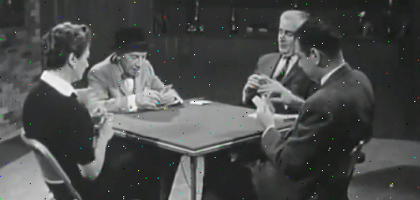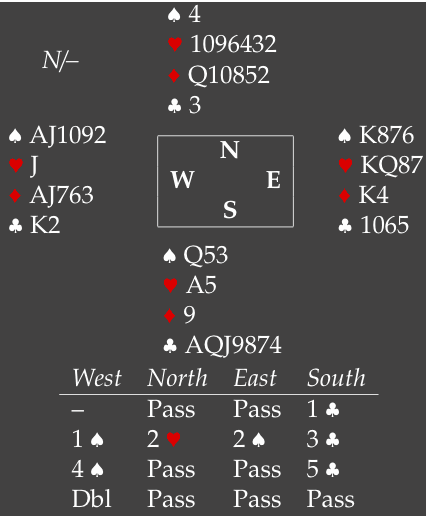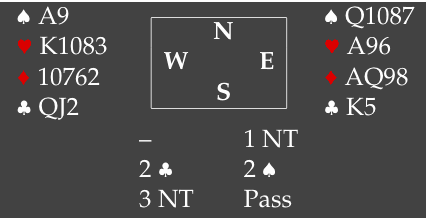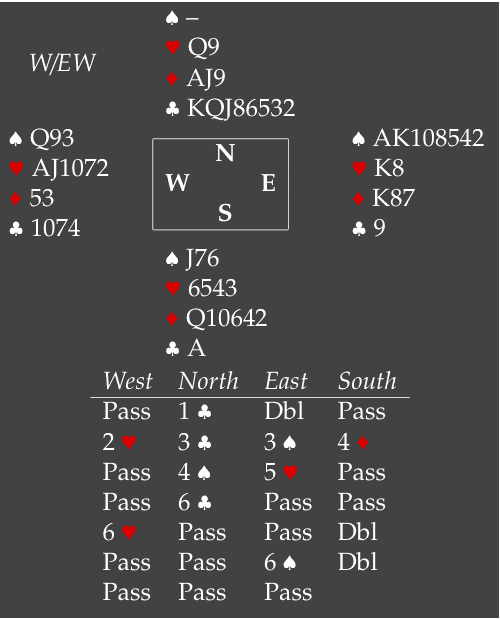
Earlier this week, my friend Bert pointed out that last Sunday (March 4) would have been Charles Goren’s 111th birthday. He also said that Goren invented the well known ace=4, king=3, queen=2, jack=1 scale for estimating the strength of bridge hands. Bert was right about the birthday but wrong about the scale.
Goren made the 4321 scale popular, replacing the much more complicated quick tricks concept invented by Culbertson, but he did not invent it. The 4321 scale was invented by Milton C. Work in the mid 1920’s, still in the auction bridge period, and first applied for contract bridge in Work’s 1929 book “Contract bridge for all”. In the book, Work suggested the method for evaluating NT contracts only, the application to suit contracts came later. Starting from the late 1940’s, Goren was Mr.Bridge in the US, having taken over that position from Ely Culbertson. Goren was the perfect figure for that, he was both quite good looking, one of the best players of the era, and a perfect host.
While researching the topic, I ran across this site: http://www.viddler.com/profile/dustinst22. It contains 16 episodes of a television show hosted by Charles Goren and Alex Dreier called “Championship Bridge” between 1957 and 1962. The shows on the site all appear to be from the 1962 season.
The format is simple: 4 players, usually experts of the time but also well known public figures who play bridge, play rubber bridge for 30 minutes with Dreier commentating and Goren introducing the players and explaining the finer technical points. That scored best over 3 or 4 hands, won $1000 and returned the next week, the pair that lost still got $500 which even by today’s standards is well paid for half an hour of play.

If you have some time to spare, you must really watch a few of these shows, they are great fun to watch but beware, it is addicting. I had promised the wife to cook dinner and do the laundry. Watching these shows made me completely forget the time, what the wife said when she came home and found a full laundry basket and empty pots on the stove, when she expected the opposite, is left as an exercise to the reader.
My impression from watching all these hands? Card play is actually quite good and wouldn’t be very different in today’s game. Bidding, however, is a hit and miss affair. Of course, the game was only 30 years old back then and a lot has happened in the next 50 years. One also notices that the top partnerships had had little discussion about methods compared to the many hours that top pairs spend discussing the game today. This is confirmed in one of the interviews with the players before play starts. In episode #9, Harold Ogust says something along the lines of “the American players are better card players, but the Italians have much better partnerships and thus beat us”. This sounds quite true, for an example of a disaster that happened to a US expert pair, see below.
Time for a few hands. These are from the match between Marx-Erdos versus Kemp-Gerber. The latter is well known for the 4♣ ace asking bid, Marx is a famous comedian who loved the game and was a decent player, the others did win medals at the Bermuda Bowl or Venice Cup, in Edith Kemp’s case her last international medal was in the 1981 Venice Cup, some 20 years later.
Board 1.

The first 3 bids would be the same in 2012. In 2012, players would have a way to conventionally show a 5-5 distribution but no such tool existed in mainstream bridge back then. In fact, Goren discussed whether west should overcall 1♠ (as she was too strong for that) or make a take-out double (right on strength but wrong on shape). The latter would be a disaster if partner responded in hearts, so Goren reluctantly agreed but it shows that theory wasn’t that advanced yet. 2♥ looks like an overbid by today’s standards, 2♠ on the other hand an underbid, nowadays players would try for game with some sort of cuebid. 4♠ on the other hand seems to confirm that 2♠ is a lot stronger than it is today. Incidentally, Goren only says that 4♠ might make, whereas it is cold. 5♣ looks like an attempt to bid the same hand twice, as 3♣ already did show most of the strength. Down 3 after the ♠A opening lead and spade continuation. The lead costs a trick but it is quite understandable.

Board 2 shows that the theory behind the game was still fresh. Today nobody would consider this auction interesting, but in 1962, Goren had to explain what the 2♣ bid meant and that ♠Q10xx was sufficiently strong enough to bid in response. That is another difference with today’s game, nowadays, the focus is on length, not on suit quality, one would happily respond 2♠ on ♠xxxx as well. In 1960, this was out of the question. The play is boring, declarer finishing with an overtrick.

Board 3 shows some interesting bidding as well. First the double of 1♣ where most players would bid 1♠ today. Then south pass, he was to weak to respond after 1♣-X. Nowadays, people would bid 1♦ and be done with their hand, in 1962, south had to pass and then introduce his suit at the 4 level later. If one compares 3♣ with the first board, one sees that the 3♣ in competition covers a lot of ground and thus creates a lot of guessing for partner. I can’t understand why west didn’t support spades at her next turn. The final bids are complete guesses, in particular I don’t quite see why east corrected 6♥ to 6♠ as his partner never supported that suit. 6♥ is down 1 from the top but NS do have to take their tricks.
Against 6♠, south led the ♣A with north dropping the ♣K. Now what? There are 2 schools of thought about that ♣K, first is that it shows that the suit is solid and NS can cash out in the suit, the second is that it is clear that south must switch and gives suit preference. South continued a heart which suggests that he followed the second school of though, 2, 9, king. Declarer drew 2 rounds of trumps, played a heart to the ace and claimed. North obviously had different ideas about the ♣K.
Who is wrong and who is right? South can see that if north has a heart void, declarer will have ♥KQxx. Then the correction to 6♠ does not make sense. If north has ♥Kx, the heart loser can go nowhere. Thus, a heart switch either won’t beat the contract or the contract would be down 1 anyway. North on the other hand can see that if the ♣A wins the trick, the clubs will be 8-3-1-1 around the table and south has to switch. Better play a small club to discourage him and hope south can work it out. In short, I think both players are at fault here.
Final thought... would this format still work in 2012, with say, Berry Westra hosting and one of Jan van Cleeff’s bridge babes at the table? At first, I didn’t think so, but then when I later saw a few minutes of the reality TV show Dinner Date, I had second thoughts. On the screen a women peeling an onion with the commentator announcing “Mary cuts the onions for her home-made lamb dish”. If people are watching this at prime time, then a bridge show with a commentator announcing “Minnie bid 3NT to protect her honors” should be a big hit too. Oh, and don’t think the men weren’t hitting on Edith in the TV show above back in the 1960’s.
Anyway, have fun watching all this.
